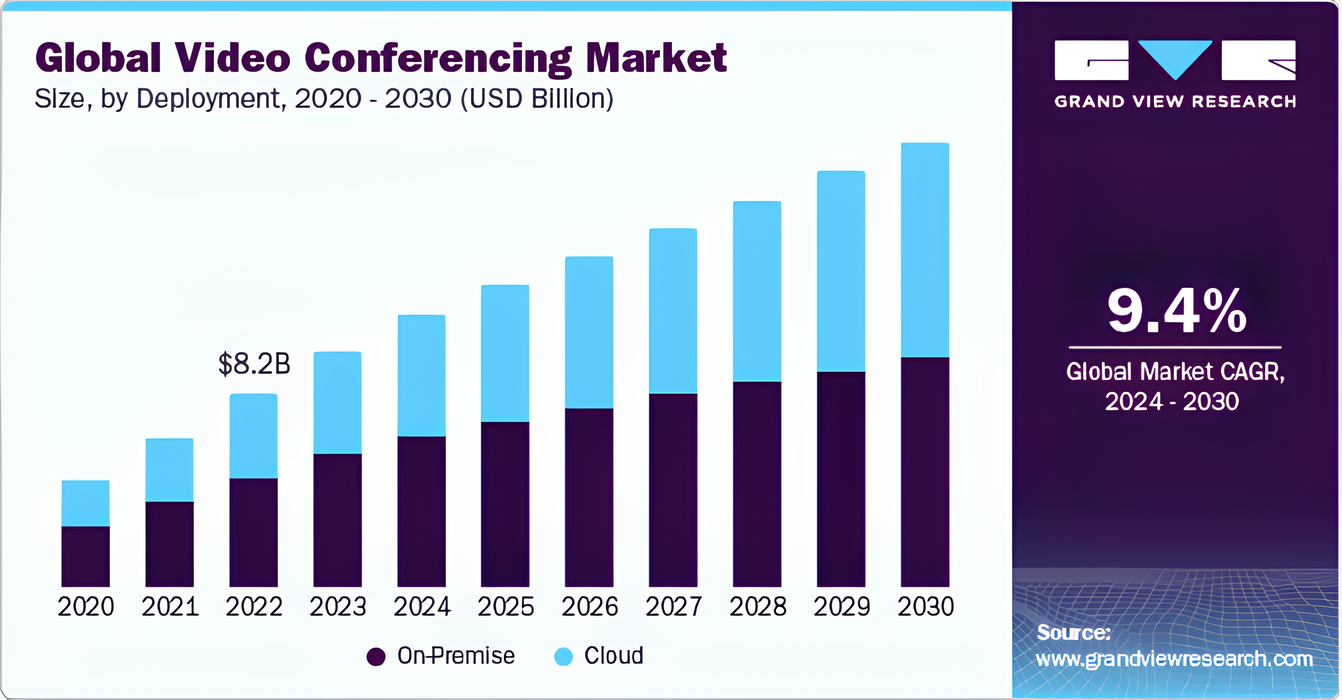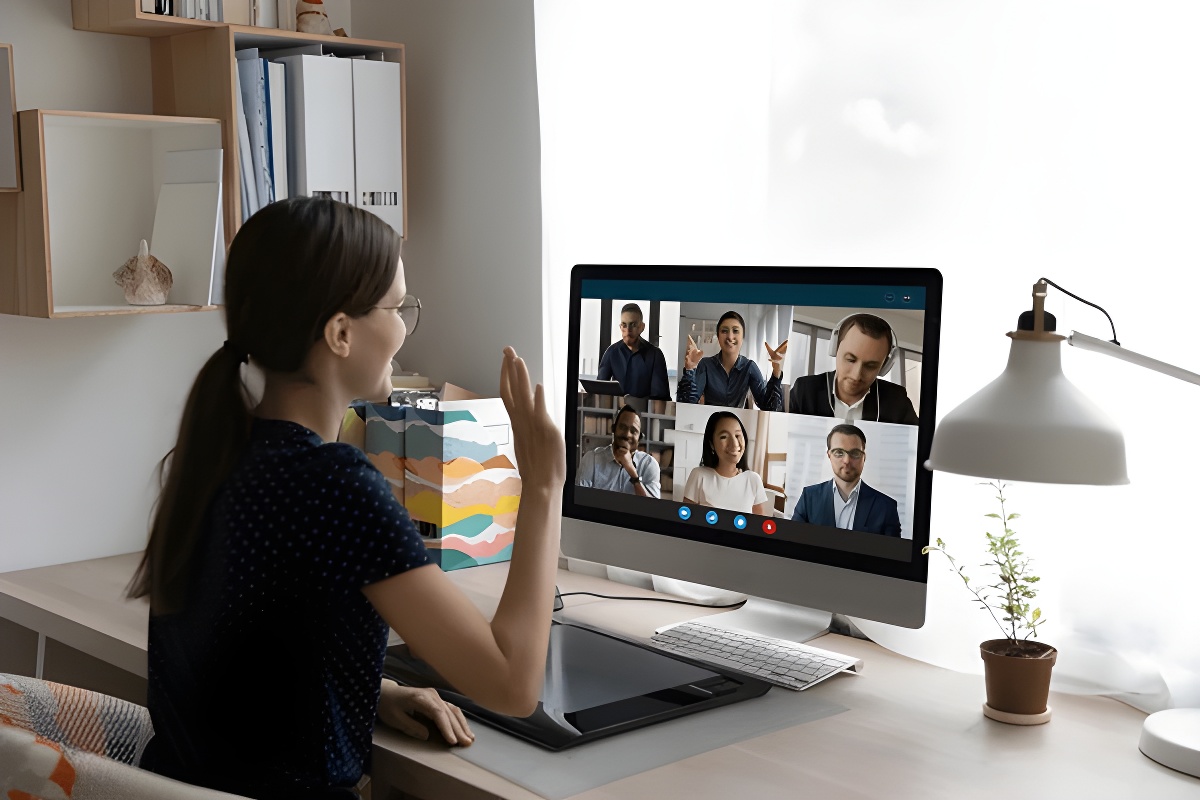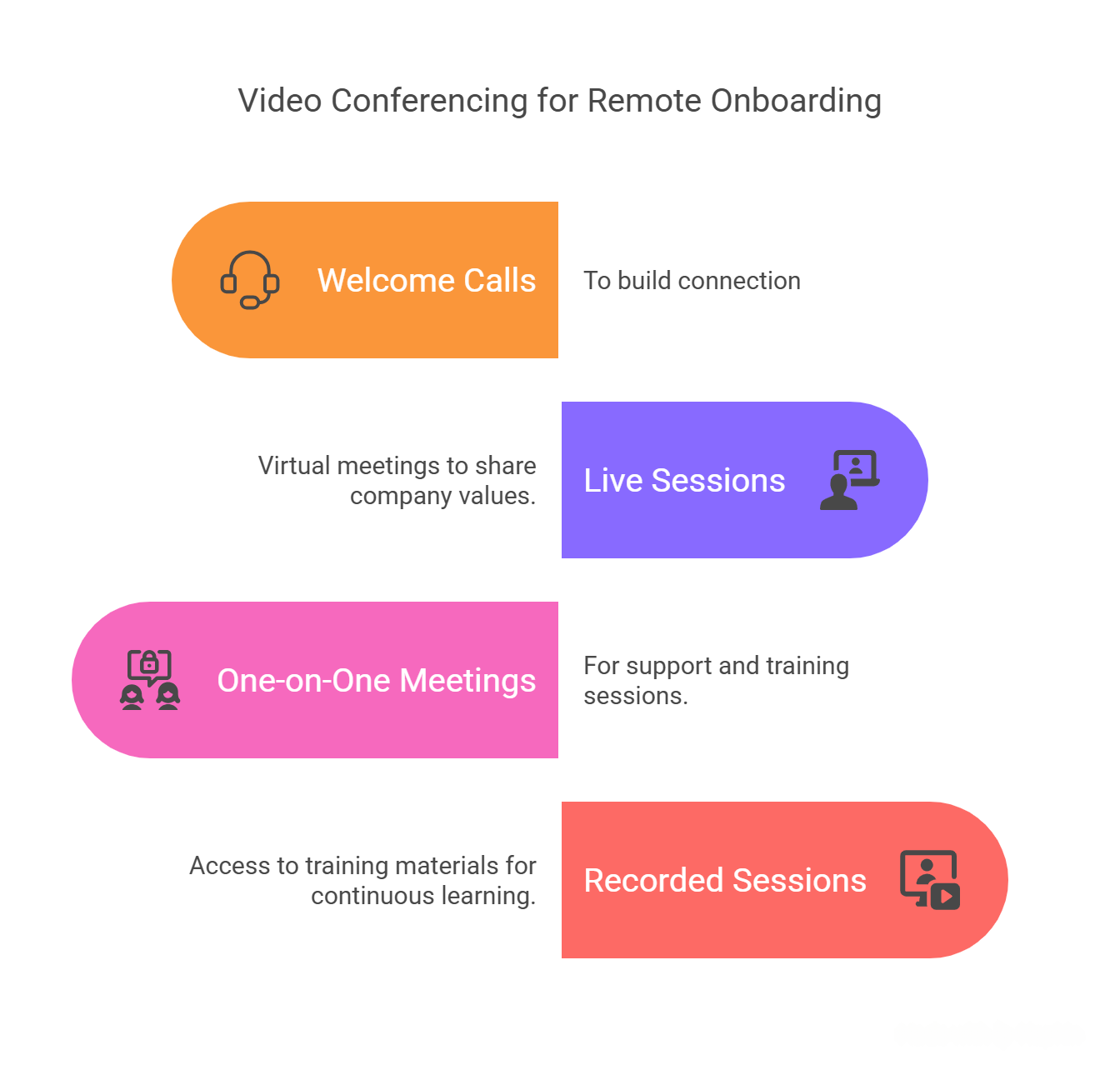Introduction
A few years ago, video conferencing was mostly a backup plan for remote teams or global meetings. Today, it has become an essential part of how businesses train, connect, and develop their workforce. The global video conferencing market was valued at $10.03 billion in 2023. It is projected to grow at 9.4% annually through 2030, hinting at its expanding role beyond simple communication. One area where it’s making a big difference is employee training.

Training is no longer about gathering employees in a conference room or sending out lengthy manuals. Workplaces are shifting, and employees expect learning to be interactive and engaging. They want training that feels relevant, keeps them involved, and adapts to their needs. Video conferencing makes this possible, reimagining training into real-time, collaborative experiences that bridge geographical gaps.
This shift in training methods is already in motion. Organisations are using video conferencing to onboard employees, upskill teams, and create leadership programmes that feel as engaging as in-person training. By using this approach, organisations can help their teams become more skilled and adaptable.
In this article, we’ll explore five ways to use video conferencing for workplace training and to make learning more engaging, inclusive, and effective.
1. Running Engaging Virtual Workshops
A great workshop brings people together and keeps energy levels high. In a virtual setting, participants can easily feel disconnected. However, with the right approach, a standard online session can become an interactive and engaging learning experience. Nearly 90% of employees say virtual workshops are just as effective or even better than in-person ones.
Instructor-led sessions work best when they go beyond presentations and encourage real participation. Just like in face-to-face settings, small-group discussions create space for collaboration. Similarly, virtual whiteboards make ideas easier to grasp, and live polls keep everyone actively involved. Meanwhile, when sessions are recorded, employees can revisit important points later, reinforcing what they learnt.
Such workshops are especially effective for collaborative training and leadership development. It also helps with respect to soft skills improvement and team-building. When employees engage in discussions and hands-on activities, learning becomes a fun experience. Whatever they learn sticks with them, making it easier to apply lessons learned in real situations.

2. Delivering Seamless Remote Onboarding
Starting a new job can feel overwhelming. It’s even harder when the work is remote, and new hires can’t collaborate at an actual workplace. That’s why making them feel welcome from day one is so important. A smooth onboarding process helps them settle in and understand the company culture. Forbes reports that 69% of employees are more likely to stay with a company for at least three years if they have a positive onboarding experience.
The Human Resources (HR) department plays a big role in this transition. Video conferencing makes it easier to introduce company values, connect employees, and set clear expectations. A personal welcome call creates an immediate sense of belonging.
Building relationships is just as important as learning the job. One-on-one meetings with managers and teammates help new hires feel supported. Role-specific training gives them the knowledge they need to succeed. A mix of live sessions and recorded materials allows them to revisit key information when needed.
Ultimately, hybrid teams need consistency. Video conferencing ensures that all employees, whether remote or in-office, receive the same structured onboarding. When new hires feel supported, they adjust faster and contribute more effectively.

3. Hosting Regular Microlearning Sessions
Microlearning is gaining popularity as an effective training method in workplaces. Instead of lengthy sessions, it delivers content in short, focused modules that are easier to absorb and retain. In fact, 58% of employees said they would be more likely to engage in online training if it were delivered in smaller parts.
Microlearning not only supports learners by letting them go at their own pace and revisit key topics when needed. It’s also a smarter investment for companies, offering targeted training that’s easier to deliver, update, and scale.
To make this approach even more effective, companies are pairing it with interactive tools. Screen sharing, interactive quizzes, and follow-ups can make learning more engaging and effective. By delivering small, structured lessons over time, companies can strengthen knowledge effectively. This approach fits current attention habits, making learning easier to absorb and retain.
4. Training Teams with Live Demos and Screen Sharing
Sometimes, organisations have situations where some employees work in the office while others are remote, which can make it challenging to explain new tools or processes clearly. Relying solely on words often leads to confusion and slower adoption. Live demonstrations help bridge this gap by offering a clear, hands-on experience. They make it easy for employees to see exactly how things work in real time. In fact, viewers retain 95% of a message when they watch it in a video, compared to just 10% when reading it as text.
With screen sharing, co-browsing, or remote desktop access, trainers can guide employees through processes step by step. Whether it’s troubleshooting, product training, or customer support, live demos ensure that teams get immediate answers and a deeper understanding.
Also, this interactive approach improves retention and saves time. Instead of flipping through lengthy manuals, employees learn best through hands-on experience and practical guidance.

5. Offering Ongoing Coaching and Feedback
Great coaching happens in everyday moments. A manager stops by to check in, shares feedback after a meeting, or offers advice over coffee. These interactions help employees grow and stay engaged. In a remote or hybrid setup, they often end up becoming less frequent, making it harder to provide ongoing support. That’s important because employees who get regular feedback are 2.8 times more likely to stay engaged at work.
Video conferencing helps keep that connection alive. Regular one-on-one check-ins, performance reviews, and goal-setting sessions create space for honest conversations. Managers can offer feedback, track progress, and provide mentorship without needing to be in the same room.
Remote coaching and feedback are a key part of leadership development and employee engagement. Video conferencing helps offer remote employees continuous guidance, making them feel supported and motivated to grow.
Conclusion
Video conferencing is now a core part of workplace learning and training. In a hybrid setup, where employees are spread across locations, businesses need solutions that keep learning engaging, interactive, and effective.
From live workshops to hands-on demos, video conferencing makes it easier to train and support employees in real time. It also benefits businesses by providing a way to conduct structured learning sessions, encourage collaboration, and offer personalised feedback.
Companies and organisations that use these tools for training can create stronger, more connected teams. Overall, training enabled by video conferencing tools also helps employees develop new skills and supports their growth within the company.
Sources for Images
-
Grand View Research (n.d.) ‘Video Conferencing Market Size & Trends’, Grand View Research
-
Shutterstock (2023) ‘Young Woman Sitting at Desk in Front of PC’, Shutterstock.
-
Shutterstock (2023) ‘Team Members Meeting in Boardroom Collaborating’, Shutterstock.
References
-
Grand View Research. (n.d.) Video conferencing market size, share & trends analysis report
-
McKinsey & Company. (n.d.) Employees give virtual learning an ‘A’ for effectiveness
-
People Insight. (n.d.) Employee engagement statistics
-
Sweary, R., 2022. The Great Acceptance and the New Battleground for Employee Retention. Forbes.
-
Westfall, B., 2016. Top LMS Features To Drive Employee Engagement. [online] Software Advice
-
Zayas, T., 2023. 2023 Report: Most Important Marketing Stats in the Software & SaaS Industry. Insivia